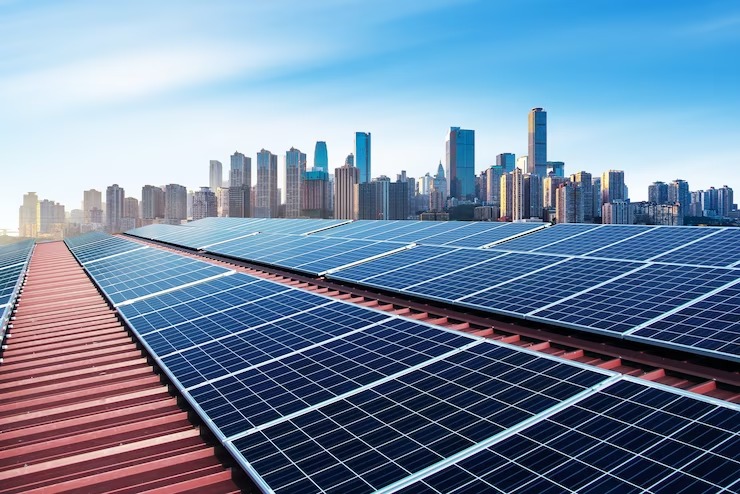Artists are increasingly embracing emerging technologies such as artificial intelligence (AI) and machine learning (ML) as tools for creative expression and experimentation.
In the realm of 3D printing, these technologies offer new avenues for innovation, enabling artists to push the boundaries of artistic practice and create immersive, interactive, and thought-provoking artworks.
This article explores how artists engage with AI and ML in their 3D printed artworks for exhibitions, examining the techniques, applications, and implications of this intersection between art and technology.
-
Introduction to AI and ML in Art
1.1 The Rise of AI and ML
Artificial intelligence and machine learning have revolutionized various industries, from healthcare and finance to entertainment and transportation. In the realm of art, these technologies are reshaping the creative process, empowering artists to explore new forms of expression, collaboration, and interaction.
1.2 Integration with 3D Printing
The integration of AI and ML with 3D printing technology expands the possibilities for artistic creation, enabling artists to generate complex designs, simulate organic forms, and incorporate interactive elements into their artworks.
By harnessing the power of algorithms and computational algorithms, artists push the boundaries of traditional artistic mediums and redefine the relationship between art and technology.
-
Generative Design and Algorithmic Creativity
2.1 Generative Design Techniques
Generative design techniques leverage AI and ML algorithms to produce novel and unexpected forms, textures, and structures. Artists use generative algorithms to explore vast design spaces, generating a multitude of variations based on predefined parameters and constraints.
2.2 Algorithmic Creativity
Algorithmic creativity blurs the distinction between artist and machine, as AI and ML systems autonomously generate artistic outputs based on learned patterns, rules, and data. Artists collaborate with AI systems, training them on large datasets of images, shapes, and textures to produce original artworks that reflect the aesthetic sensibilities of both human and machine.
-
Interactive and Responsive Art Installations
3.1 Interactive Elements
Artists incorporate AI and ML algorithms into their 3D printed artworks to create interactive and responsive installations that engage viewers on a deeper level. By embedding sensors, cameras, and other interactive devices, artists enable their artworks to react dynamically to the presence and movements of the audience.
3.2 Machine Learning Models
Machine learning models analyze input data in real-time, generating dynamic responses that adapt to changing environmental conditions and user interactions. Artists train ML models to recognize patterns in sensory input, allowing their artworks to evolve and respond in unpredictable ways.
-
Data Visualization and Sonification
4.1 Data-Driven Artworks
Data visualization techniques translate abstract datasets into visual representations that convey complex information in intuitive and engaging ways. Artists use 3D printing technology to materialize data-driven artworks, transforming numerical data into physical forms that can be experienced and explored spatially.
4.2 Sonification of Data
Sonification techniques translate data into sound, transforming numerical values into auditory signals that convey patterns, trends, and relationships. Artists create immersive soundscapes that complement their 3D printed artworks, enriching the viewer’s sensory experience and deepening their understanding of the underlying data.
-
Ethical and Societal Implications
5.1 Ethical Considerations
The integration of AI and ML in 3D printed artworks raises ethical questions regarding authorship, ownership, and agency. As AI systems play an increasingly active role in the creative process, artists must grapple with issues of attribution, transparency, and accountability.
5.2 Societal Impact
The widespread adoption of AI and ML in art has far-reaching implications for society, influencing cultural norms, aesthetic preferences, and artistic practices.
Artists and technologists collaborate to explore the social, cultural, and ethical dimensions of AI-driven art, fostering dialogue and critical reflection on the role of technology in shaping human creativity and expression.
-
Collaborative Artistic Practices
6.1 Cross-Disciplinary Collaboration
The intersection of AI, ML, and 3D printing encourages cross-disciplinary collaboration between artists, technologists, and researchers. This collaborative approach fosters a rich exchange of ideas, expertise, and perspectives, leading to the development of innovative projects that push the boundaries of both artistic and technological realms.
6.2 Artist-Technologist Partnerships
Artists often partner with technologists and programmers to co-create AI algorithms and custom software tailored to their artistic vision. These partnerships enable artists to leverage the technical expertise of collaborators, resulting in more sophisticated and refined applications of AI and ML in their 3D printed artworks.
-
The Evolving Role of the Audience
7.1 Participatory Experiences
AI-driven 3D printed artworks often invite the audience to actively engage and participate in the artistic experience. Viewers become co-creators as they interact with responsive installations, influencing the evolution of the artwork and contributing to its dynamic nature. This shift challenges traditional notions of passive observation in art, transforming spectators into active participants.
7.2 Democratisation of Art Creation
The accessibility of AI and ML tools, combined with advancements in 3D printing technology, has the potential to democratize art creation. Artists can harness these tools to amplify their creative capabilities, and as these technologies become more user-friendly, a broader range of individuals may explore and express their creativity in the realm of 3D printed art.
-
Challenges and Future Directions
8.1 Technical Challenges
Despite the exciting possibilities, artists face technical challenges such as refining algorithms, overcoming hardware limitations, and ensuring the reproducibility of 3D printed artworks. Addressing these challenges requires ongoing collaboration between artists, technologists, and researchers to push the boundaries of what is technically achievable.
8.2 Ethical and Cultural Challenges The integration of AI and ML in 3D printed art also introduces ethical and cultural challenges. Artists must navigate issues related to bias in algorithms, cultural appropriation, and the potential reinforcement of existing societal norms. Open dialogue, diversity in collaboration, and ongoing reflection on the ethical implications of AI-driven art are crucial for addressing these challenges.
Conclusion:
In conclusion, artists engage with emerging technologies such as artificial intelligence and machine learning in their 3D printed artworks for exhibitions, pushing the boundaries of artistic expression and challenging traditional notions of creativity.
By harnessing the power of AI and ML algorithms, artists create immersive, interactive, and data-driven artworks that invite viewers to explore new forms of aesthetic experience and engage with complex socio-cultural issues.
Through their innovative use of technology, artists contribute to a dynamic and evolving artistic landscape, where the boundaries between art and technology blur, and creativity knows no bounds.



